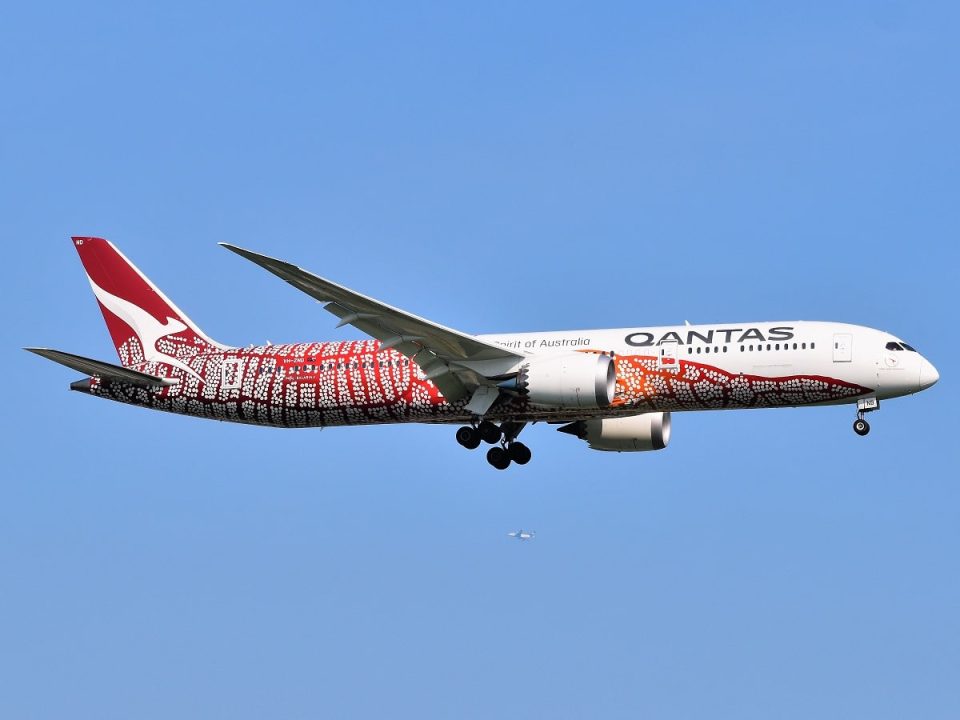Aviation
Boeing 737 structural cracks: Qantas confirms problems on 3 planes

Qantas has completed precautionary inspections of thirty-three 737NG aircraft, checking for hairline cracks that have appeared in some high cycle aircraft worldwide.
The cracks relate to the ‘pickle fork’ structure, which is located between the wing and fuselage. Qantas brought forward these precautionary checks by up to seven months and completed them within seven days.
Of the 33 of Qantas’ 737 aircraft that required inspection, three were found to have a hairline crack in the pickle fork structure. These aircraft have been removed from service for repair.
The aircraft had all completed around 27,000 cycles. Any aircraft with more than 22,600 cycles was inspected, in line with advice from regulators.
United Airlines orders 50 Airbus A321XLRs for transatlantic route expansion
Qantas will minimise any customer impact from having these aircraft temporarily out of service.
Qantas is working with Civil Aviation Safety Authority and Boeing to resolve this issue, which involves some complex repair work. All three aircraft are expected to return to service before the end of the year.
CEO of Qantas Domestic, Andrew David said: “As people would expect with Qantas, we’ve gone above what was required to check our aircraft well ahead of schedule.
Boeing Statement on 737 MAX Return to Service
“We would never fly an aircraft that wasn’t safe. Even where these hairline cracks are present they’re not an immediate risk, which is clear from the fact the checks were not required for at least seven months.
“Unfortunately, there were some irresponsible comments from one engineering union yesterday, which completely misrepresented the facts. Those comments were especially disappointing given the fantastic job our engineers have done to inspect these aircraft well ahead of schedule, and the priority they give to safety every day of the week,” added Mr David.
United Airlines fined $1.9 million for long ground delays
Qantas will continue to monitor aircraft that are in scope of the airworthiness directive as inspections fall due.

Aviation
COMAC Unveils Plans for the C929 to Rival Airbus and Boeing

After the success of China’s first C919 aircraft, the country is setting its sights on developing a larger plane. COMAC (Commercial Aircraft Corporation of China) has officially confirmed plans to build a widebody aircraft, marking a significant step in its aircraft lineup.
Traditionally, Airbus and Boeing dominate the widebody aircraft market, with decades of expertise in developing planes and engines capable of carrying heavy payloads. China, which currently relies on imported engines, is now aiming to challenge these giants with its own widebody jet, the C929, designed to compete with the Airbus A350 and Boeing 777.
American Airlines Is Looking for Flight Attendants: Apply Now
The C929 will be China’s first independently developed long-range widebody aircraft. It adheres to international airworthiness standards and boasts independent intellectual property rights. The baseline version is designed to seat 280 passengers and offers a range of 12,000 kilometers, catering to global demand for both regional and international air travel.
Russia, which also needs reliable narrowbody and widebody aircraft, could become a key customer for the C929. Additionally, China plans to target the broader Asian market as it continues to expand its aviation capabilities.
Close Call at Heathrow: BA Flight Narrowly Escapes Drone Collision
China’s aviation progress includes the ARJ21 (now called C909), a regional jet with 100 seats for shorter routes, and the C919, a narrowbody jet with 180 seats designed to rival the Boeing 737 MAX and Airbus A320. Both models have found increasing demand in the domestic market.
At China’s largest air show in Zhuhai, COMAC announced that Air China will be the launch customer for the C929 widebody jet, though details about order size and delivery timelines were not disclosed.
Other major deals announced by COMAC include:
- Hainan Airlines: Firm orders for 60 C919 and 40 C909 regional jets.
- Colorful Guizhou Airlines: 30 C909 jets, with 20 firm orders and 10 provisional agreements.
The C929, renamed from the CR929 after Russia withdrew from the joint development project in 2023, is expected to carry 280–400 passengers with a range of 12,000 kilometers, competing directly with Boeing’s 787 Dreamliner.
According to COMAC’s deputy general manager, Tong Yu, the first fuselage section of the C929 is expected by September 2027, with prototype test flights anticipated soon after.
-

 Aviation2 months ago
Aviation2 months agoMicrosoft Flight Simulator Raises $3 Million to Bring Back the An-225 Mriya
-

 Airlines2 months ago
Airlines2 months agoQantas Engineers Stage Walkout Over Cost of Living Concerns
-

 Airlines2 months ago
Airlines2 months agoQatar Citizens Can Travel to the United States Without a Visa
-

 Aviation2 months ago
Aviation2 months agoQatar Airways bans these new Electronic Devices on plane
-

 Airlines2 months ago
Airlines2 months agoJapan Airlines Rolls Out Free Domestic Flights to International Passengers
-

 Defence2 months ago
Defence2 months agoWhich Country Has the Largest Fleet of Fighter Aircraft?
-

 Airport2 months ago
Airport2 months agoWestern Sydney Airport Welcomes Its First Plane After 6 Years of construction
-

 Travel2 months ago
Travel2 months agoQatar Airways Launches Four Additional Flights from Amsterdam








